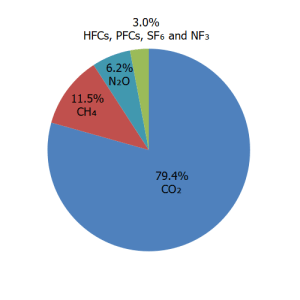Can you imagine our amazing Lebanese moderate climate that we have all loved turning into an exceptionally scorching or freezing weather condition?
Climate change has become a global concern, with impacts felt across all nations and regions. It messes up countries’ economies and comes with big costs now and in the future, affecting people, communities, and nations deeply.
This change is directly related to human actions and interventions. Only 5 countries represent the global major emitters and are mainly contributing to this effect through Greenhouse Gas Emissions.
It’s important to highlight that what’s even more concerning is the lack of substantial strategies and significant efforts by these nations to diminish their contribution to greenhouse gas emissions and, in turn, global warming. China, in particular, demonstrates a noticeable upward trajectory in GHG emissions.
Can we control and minimize these green house gas emissions ? Can we prevent our climate change and have a more sustainable environment ?
CO2 , CH4 and N2O are major gases contributing to Global Warming as per below chart:

Hence, investigating the sources of these gases and identifying the most influential source contributor will unveil the underlying issue, offering a solid foundation from which to initiate efforts aimed at reducing their presence and subsequent impact
Data reveals that bad agricultural practices are major source of NO2 emissions in major emitters whereas Energy generation is the major source of Methane in this group except for India and Japan.
A central concept is that fuel usage stands as the primary driver of CO2 emissions. To delve deeper, we will analyze the predominant form of fuel consumption in each country by examining the average percentage distribution across various sources. Solid Fuel is major source in China and India, Liquid Fuel is major source in Japan and USA whereas Gaseous Fuel is major source in Russia.
Where is the fuel mainly used?
Powering the World : Exposing the insatiable hunger for energy in the captivating domains of electricity and heat production.
Potential Solution
Hence, the solution lies squarely in human actions and interventions. Opting for organic farming, free from chemical inputs, can significantly reduce harmful gas emissions. Additionally, a shift to renewable energy sources such as solar and wind will substantially decrease greenhouse gas emissions, contributing further to a sustainable future and climate protection. As an example, Brazil that generates around 46 % of its energy from renewable sources generates GHG emissions that constitute just 5 % of China’s and 7 % of USA emissions.
It is not fair that only around 25 % of the globe area is the major source of GHG emissions, climate change and environmental degradation. We must transition towards more sustainable actions and behaviors to ensure a more resilient future for our planet.
Recommendation
The urgent need for a global sustainability committee is evident, and the starting point is the creation of the “Major Emitters” group. This committee aims to be a central force guiding worldwide sustainable initiatives, encouraging collaboration among nations to address environmental challenges and cultivate a resilient global ecosystem. The Major Emitters entity is positioned to lead this effort, uniting influential contributors and paving the way for collective action in the pursuit of a sustainable future.


0 Comments